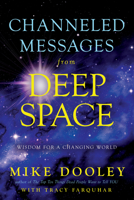Eating Disorders (Writing the Critical Essay)
Select Format
Select Condition 
Book Overview
Offering instructive guidance while avoiding a typical classroom feel, Writing the Critical Essay: An Opposing Viewpoints Guide directly supports student achievement. This exciting new series is specifically designed to help students write effective five-paragraph essays. Writing the Critical Essay: An Opposing Viewpoints Guide expands Greenhaven Press's celebrated Opposing Viewpoints product line, providing easy access to multiple sides of current, yet timeless debates - ideal subjects for persuasive writing. Writing the Critical Essay: An Opposing Viewpoints Guide has all a student needs to complete an essay on a chosen controversial topic. Using exemplary presentations of opposing viewpoints as research material, each book features: Model essays guiding students in writing a particular five-paragraph essay, including persuasive, descriptive, expository and cause-and-effect essays Guided reading and discussion questions helping students understand the essays themselves and target persuasive techniques authors use to compose convincing arguments A final essay encouraging students to go beyond the five-paragraph model Sequential step-by-step exercises helping students outline arguments, write introductions and conclusions, and ultimately construct their own essays Supplemental materials providing essay topic ideas Bibliographic and electronic resources for further research And more
Format:Library Binding
Language:English
ISBN:0737736410
ISBN13:9780737736410
Release Date:December 2006
Publisher:Greenhaven Press
Length:102 Pages
Weight:0.84 lbs.
Dimensions:0.5" x 7.2" x 9.3"
Age Range:12 to 17 years
Grade Range:Grades 7 to 12
Related Subjects
Anatomy Anatomy & Physiology Basic Sciences Biological Sciences Biology Biology & Life Sciences Clinical Evolution Health, Fitness & Dieting Health, Fitness & Dieting Internal Medicine Medical Medical Books Medicine Neurology Neuropsychology Neuroscience Psychology Psychology & Counseling Science Science & Math Science & Scientists Science & TechnologyMore by Tracy Farquhar
Customer Reviews
5 customer ratings | 5 reviews
There are currently no reviews. Be the first to review this work.




















